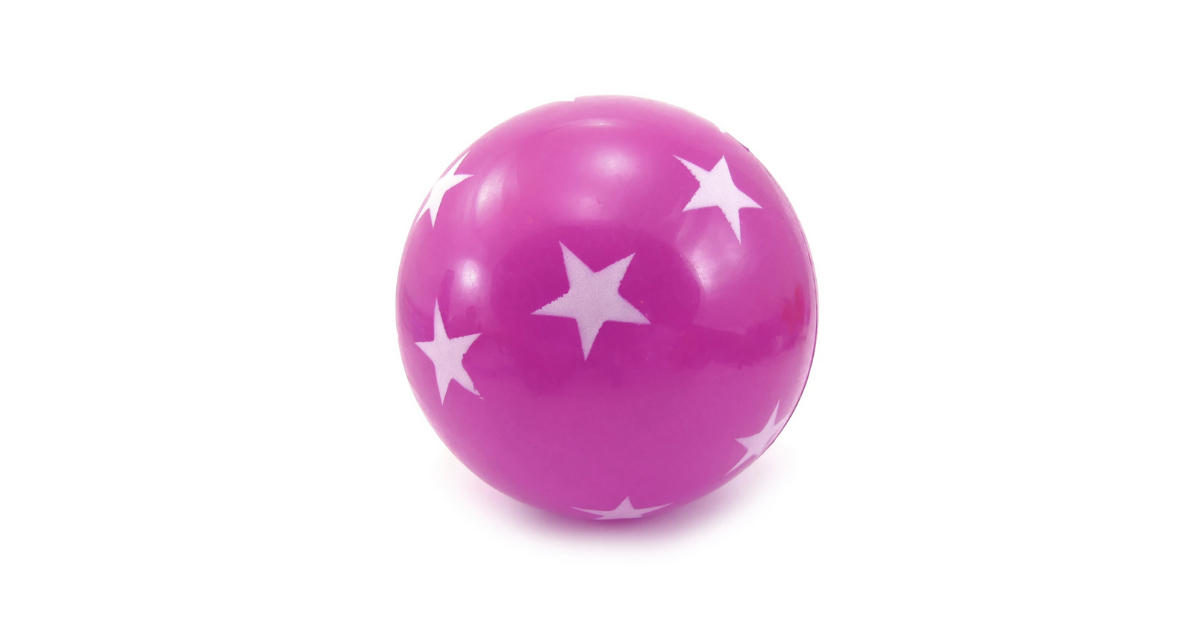Just when you thought that there couldn’t possibly be anything new in your teaching repertoire, re-think the old vinyl beach ball. Inexpensive, the beach ball teaching tool is a great way to jazz up instruction through gender-friendly practices. Not only is the beach ball teaching tool fun, it may help to stimulate neurons. We now know a great deal about what stimulation the brain craves, which scents stimulate thinking and emotions, and how stress affects the brain. Like any other physical structure, the brain stays flexible when it is used, and a beach ball is a great way to engage with children.
The beach ball teaching tool allows for gender-friendly practices that meets the needs of both boys and girls. Updated in 2009, I draw on ideas and research outlined in More Than Pink and Blue: How Gender Shapes Your Curriculum.
I propose that beach ball techniques appeal to boys and girls in the following ways:
- Boys and girls crave movement and activity. Tossing the ball, especially when large muscle movements are emphasized, engages boys and girls with energy and action.
- As they grow into elementary years, children tend to get competitive. A bit of friendly competition, when teaming or pairs are lined up, make the beach ball a game to be won, not just a review for the world geography test.
- On the other hand, a team format with the beach ball focus gives girls and boys practice collaborating and building social networking skills.
- In addition, the use of language, varying the questions and prompts on the vinyl stripes encourages the development of a rich verbal repertoire.
Conveniently, secondary, elementary and primary level teachers can use simple props such as a vinyl, inflatable beach ball to keep neurons zipping about the pre-frontal cortex. How can this be accomplished?
Think of using the beach ball prop in five ways:
1. As a stimulating technique. Toss the beach ball to students to catch as a way of involving them in a discussion. Pass the beach ball around a circle of chairs to keep energy and momentum going. Move the beach ball around the room in time to music to activate the auditory modality of learning.
2. As a tool of inquiry. Using an inexpensive, inflatable beach ball and a permanent marker, write questions or prompts on each colored stripe. Toss or pass the ball to a student and invite him or her to respond to the question or prompt that “lands” facing him or her. I have designed several “themes” to use on different beach balls so that teachers can vary the routine. Examples are shared later in this article.
3. As a classroom management tool. Print the names of group members on the stripes of balls and keep the collection of balls in a colorful child’s wading pool in your activity area or near an inflatable basketball hoop. This adds a sense of fun to any day. Pull out a ball and flip it around until you come to a child’s name and use it to grab the child’s attention, ask the child a question; allow the child to ask a question, or use it to review for a test. Start by tossing it to Jamal whose name is on the yellow stripe. Once Jamal is done, allow him to toss it to the next child who must accomplish the task before tossing it to another child.
4. As a mini-therapy ball. Using the same method described above, inscribe the stripes of the ball with prompts from the affective, rather than the cognitive domain of learning. Giving voice to one’s feelings, positive or negative, is a good way to keep serotonin levels even in the brain. This optimizes brain function. We also know that children’s thinking skills impaired while they are under stress, so a beach ball activity can be therapeutic. Appropriate prompts appear below:
a. Today, I feel like_______________.
b. I am happy today because_____________.
c. I am feeling worried today because_______________.
d. Something is on my mind today and it is____________.
e. I would like to talk about _________________.
f. Something that gives me joy is_____________.
g. I feel good when I think of_____________.
5. As a physical activity tool. The brain works best when plenty of oxygen is flowing. Even simple physical activities can increase oxygen flow with amazing results. This is a nice way to transition from a stressful activity to a lower key one or to help students focus their attention. Using music and a variety of simple props, give beach balls to each participant or to pairs of students and have the children try the following:
- Lift the ball over your head
- Pass the ball to your partner
- Toss the ball into the laundry basket
- Squeeze the ball with both hands
- Roll the ball to your partner
- Hold the ball in your arms and move them side to side
- Touch your nose with the ball
- Roll the ball under the table
Within gender-friendly practice, the use of “themes” invites what I call “chunking and layering” or simply making connections between new and old learning. This reduces anxiety by cooling down the amygdala and allowing the pre-frontal cortex to function with ease. Consider these themed prompts for your ball(s).
Learning
What do you remember about ____________________?
Can you name something new we did today?
What is the name of ______________?
Can you tell me something new about _________________?
What is a word that means ____________________?
Connections
How do __________ and ___________ go together?
Have you ever done this before?
What does _____________ remind you of?
When was the last time we ___________________?
This is something my friend ____ would like.
Book or Story Activity
I thought the main character was __________________
Did you think this book was entertaining?
Would you recommend this book to a friend?
The plot of this story was _____________________
The author’s style reminds me of _________________
Evaluation
On a scale of 1 to 5, I rate this activity as a __________
Was this activity worth my time?
Would I like to try this activity again?
Would I recommend this activity to a friend?
Today’s activity left me feeling ________________________
Social Studies
Go to the map and find _________________________
What is the capital of ___________________?
Which country or state borders ___________________________?
Name 3 facts about _______________________________
What language is spoken in __________________?
Having a ball with gender-friendly classroom practice offers parents, educators and nannies at many levels the opportunity to introduce an inexpensive, simple set of strategies into their teaching. I have used this strategy with children and adults and found that the element of fun should not be underestimated. Likewise, I have made the design of unique “inquiry balls” a requirement in my senior level elementary methods class for the past three years. None of the 120 balls developed by pre-service teachers have been the same and 100% of the novice teachers reported that the practice appealed to their students, most of whom attend class in Title I, high risk schools. As I like to say to my student teachers, if it works in the toughest settings, then you know it works!
The US Nanny Association thanks all the nannies, advocates and business leaders who provide practical tips and insight to elevate our industry. Thank you for sharing your expertise.

